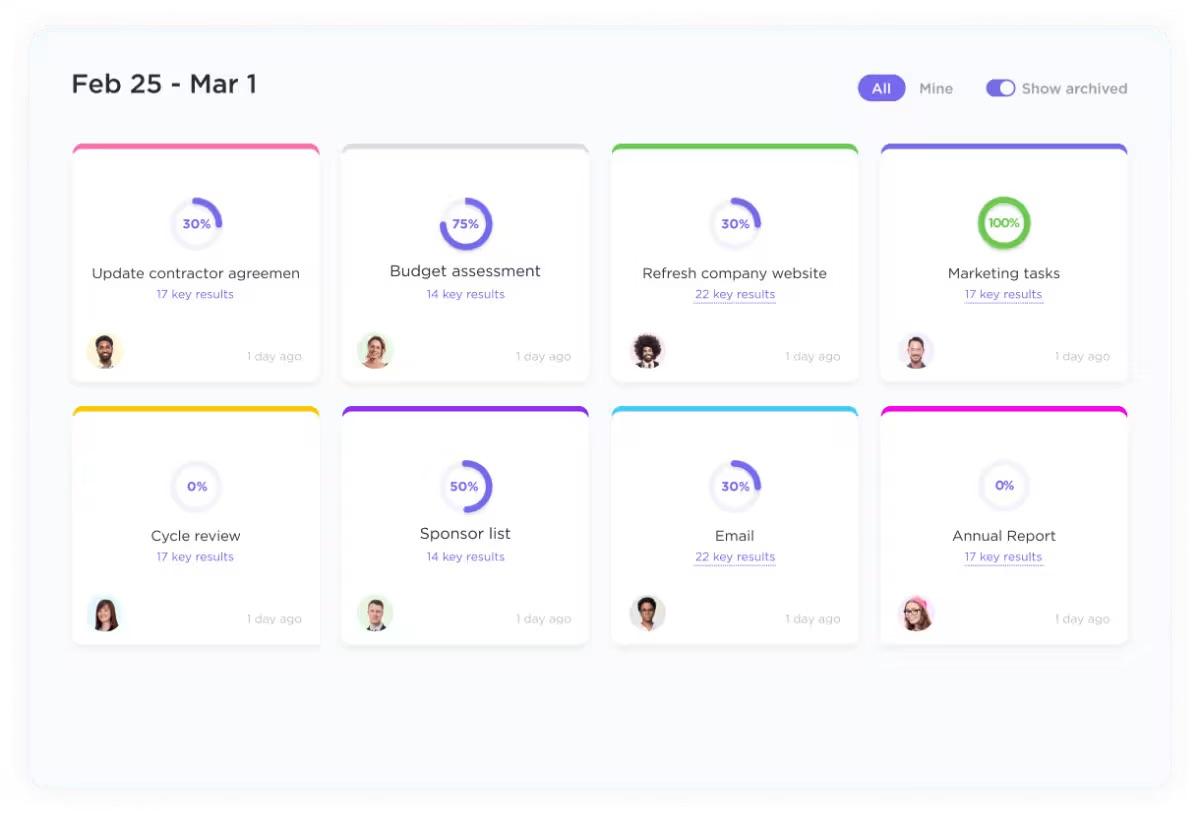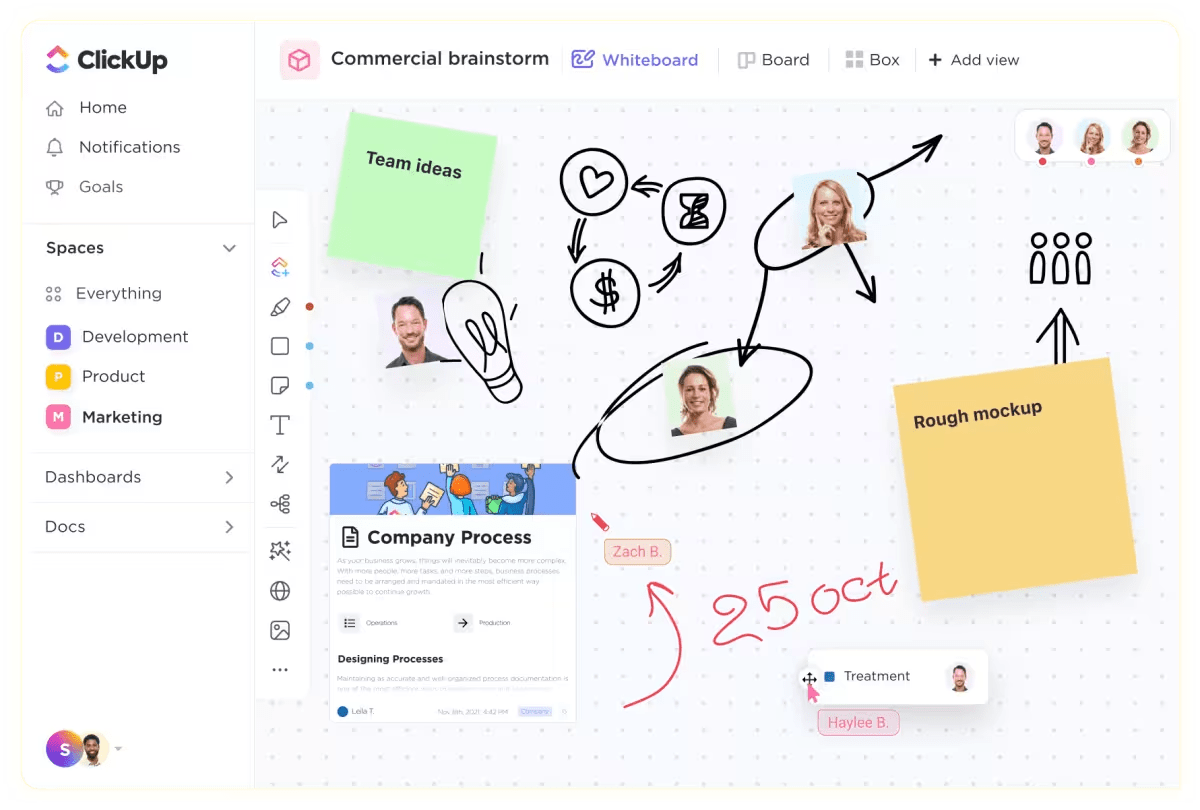

Building a winning product is hard. Between the original idea, product-market fit, design, development, and iterations, there are hundreds of moving parts. Larger products, like enterprise applications, or high-scale ones, like social media apps, have millions of aspects working in tandem.
Managing all this demands a robust yet adaptable strategic approach. One of the approaches gaining popularity in the recent past is the GIST framework.
Let’s dive deep into this concept.
What is GIST Planning?

GIST stands for Goals, Ideas, Step-Projects, and Tasks.
The GIST framework is an agile product planning approach aimed at keeping tasks focused on goals, eliminating unnecessary management overhead, and adding more agility into the engineering team.
Created by Itamar Gilad while at Google, GIST offers an alternative to using roadmaps in the product development process. GIST connects organizational objectives to everyday tasks in a linear manner. It creates a line of sight from big goals like increasing revenue to everyday tasks like ‘quash this bug.’
GIST offers different planning horizons for each stage. For example, you might set goals for the quarter and plan tasks for a week/sprint. It also uses different kinds of tools to track progress.
Let’s see how that typically pans out.
The Components of GIST Planning
As we mentioned, the GIST framework for product planning comprises four key components: Goals, Ideas, Step-Projects, and Tasks. Each of them play an important role. Here’s how.
Goals
The GIST framework rests on the belief that if you give your teams their goals, they’ll find the best way to get there. As a result, the goals in GIST are:
- Aligned with company strategy
- Expressed as measurable desired outcomes
- Answers to questions around the purpose and rationale of a project
- Set for the longer term, typically a year
Ideas
Ideas refer to the potential paths through which a team can achieve their goals. Generally, these are hypothetical, which means that in this step, teams explore all possibilities—without judgment—to choose the best way forward.
It is expected that this phase will throw up many potentially good ideas. Once they have a bank of new ideas, teams prioritize them based on evidence to test and optimize for implementation.
Step-projects
The ideas prioritized in the previous step are now executed cautiously. Each step project is no more than 10 weeks long, built with the objective of testing an idea. Step projects are:
- Used for testing ideas
- Deliberately small
- Restricted to short durations
- Given lower investments in resources
- Designed for quick learning
Tasks
At this stage, each project is broken down into tasks and managed with time-tested project management techniques.
Transitioning from Product Roadmaps to GIST Planning
If you’ve been using classic product roadmaps in your planning process, the GIST model might seem a little unconventional. Admittedly, it’s a unique framework, but one that’s seen a lot of success.
Roadmaps are an extremely popular way in which teams conduct product planning. They’ve been used for years, product managers are comfortable with it, and it works. Then why do you need to consider an alternative? Let’s see.
Agility
As Gilad says, “Agile development addressed project waterfall, but didn’t change planning waterfall.” Creating technology roadmap templates and product briefs was seen as a strategic activity, done once a year, that soon got outdated.
GIST Planning creates greater agility throughout the process by focusing on small units of the roadmap of project management instead of a few big projects that last months.
Timeliness
Product roadmaps can fall out of sync when there’s a change in the market, customer expectations, or even shifting organizational prerogatives. GIST keeps the team adaptable, recalibrating ideas, step-projects, and tasks at regular intervals.
Chances of success
A roadmap includes ideas and plans that are otherwise untested. For instance, it might include a feature that isn’t validated by the market. GIST eliminates this problem by creating small (typically 10-week long) step projects, truly enabling teams to fail fast.
Chances of success
Product roadmaps are often created by senior management or product leaders who define the path that the teams need to take. In other words, ideas often come from the top. GIST creates a space for everyone on the team to give ideas without judgment, fostering creativity and innovation. This is a very big deal if you’re hoping to capitalize on the collective talent and creativity within your team.
Collaboration
Product roadmaps are often created by senior management, defining the path that the teams need to take. Ideas often come from up top. GIST creates a space for everyone on the team to give ideas without judgment, fostering creativity and innovation.
Objectivity
In traditional product development, ideas are accepted or rejected on subjective opinion. GIST offers an objective framework for prioritization and testing of ideas, which can democratize decisions and maximize your chances of success.
If you’re convinced, let’s get to the best practices for implementing GIST in your organization.
Implementing the GIST Framework in Product Management
Any new approach is a change that your team might be resistant to. Making a transition requires effective change management as well. Let’s see what you can do to make this smoother.
1. Choose your toolkit
Before you throw out your roadmaps and put GIST into practice, think about your toolkit. For instance, you might use spreadsheets for your idea bank, a project management tool for tasks, and a different system altogether for tracking metrics.
While this is fairly common, it’s also inefficient, causing tool fatigue. Choose a tool that allows you to set goals, track ideas, break them down into projects, create tasks, and monitor progress all in one place.
ClickUp for Product Teams is all this and more.
Use ClickUp Goals to set targets or product OKRs, whether they are numerical, monetary, true/false or task targets. You can directly connect these targets to each step project, by treating them as sprints and setting sprint targets.

Use ClickUp Docs to maintain your ideas bank. Use project plan templates to structure and manage step-projects.
Use ClickUp Tasks to create a list view of your backlog of ideas. Use it as your task management software to schedule the top priority tasks, add assignees, create checklists for acceptance criteria, track time, measure progress, and more, all within ClickUp.

2. Educate the team
If you want to ensure that your team members don’t fall back into the old ways, you need to educate them about GIST and win their buy-in. Bring the team together in a virtual workspace like the ClickUp Whiteboard and walk them through your product management strategy. Connect that to GIST, painting a clear picture for them.

If you already have a product development roadmap, you can also walk the team through a transition. Try this ClickUp Product Development Roadmap Template to outline your long-term goals and priorities. Use them to demonstrate to the team how GIST would fit their needs better.
Invite comments and feedback from each team member. Handle objections with grace and incorporate them in your future communications where appropriate. Build systems for prioritizing ideas, planning step-projects, etc., collaboratively with your team. As you go along, incorporate GIST as one of the mandatory product management skills.
3. Change your practices
Slowly begin integrating the GIST approach to product planning. Use it in your yearly goal setting, quarterly reviews, all the way down to sprint planning. Minimize using the product roadmap as your primary view of the software and use your product strategy as the north star.
If you don’t yet have it documented, get started effortlessly with the ClickUp Product Strategy Template. You can also sample the variousoptions for product strategy templates available to you.
Pick one and set the foundation. From there, go through goals, ideas, step-projects, and tasks, always in that order.
4. Measure and adapt
At the end of each step-project, go through the agile motions of measuring outcomes, conducting a retrospective, and ensuring continuous improvement. Use the ClickUp Dashboard to monitor progress toward your chosen goals.

Remember that the primary goal of GIST is to test many ideas quickly. So, in the end, be honest with yourself and explore whether your experiment was successful or not.
Ace Your Product Development with ClickUp
Winning products require robust planning and consistent execution. While the execution bit has undergone myriad iterations and improvements, planning has remained traditional. Especially with the product roadmap as the guide, plans are distant from the goal, and tasks are often out of sync.
The GIST framework changes that. It uses the best product planning and project management techniques to create a process with much higher chances of success. It leverages tools at each stage for better visibility and adaptability. It gives enterprises and large teams a lean startup energy.
The fundamental advantage that ClickUp offers is that it’s more than just a strategic planning software. ClickUp consolidates all the tools you need to embrace the GIST framework in one place.
Set and track goals. Capture and review ideas. Design and plan sub-projects. Assign and execute tasks. Monitor progress. Make improvements. Rinse and repeat.
Improve product planning at your organization. Try ClickUp for free today.



